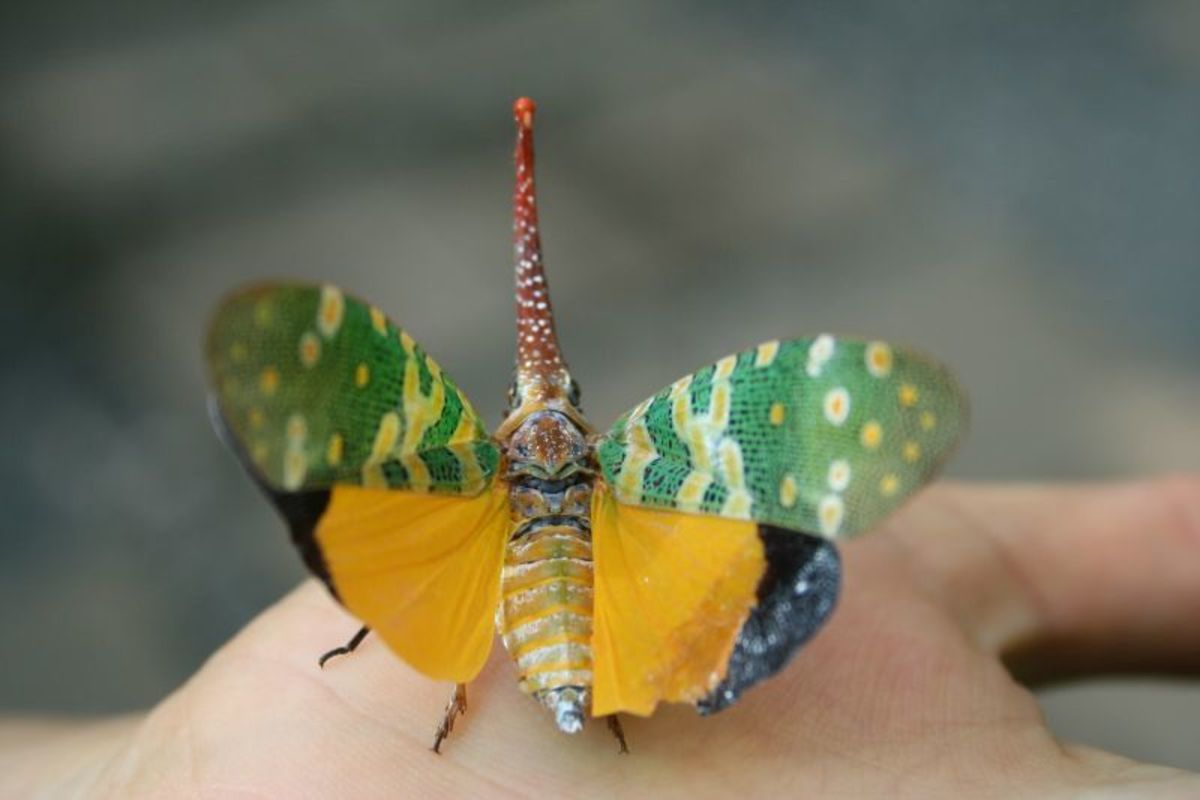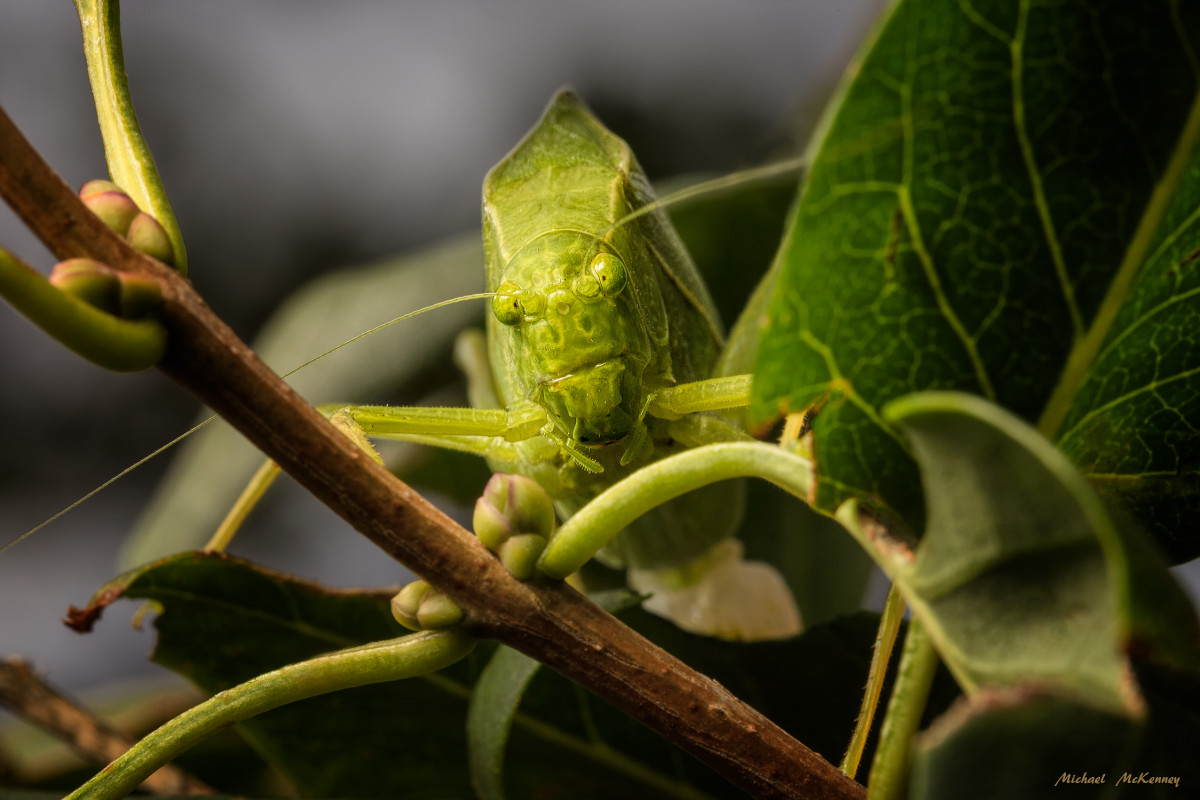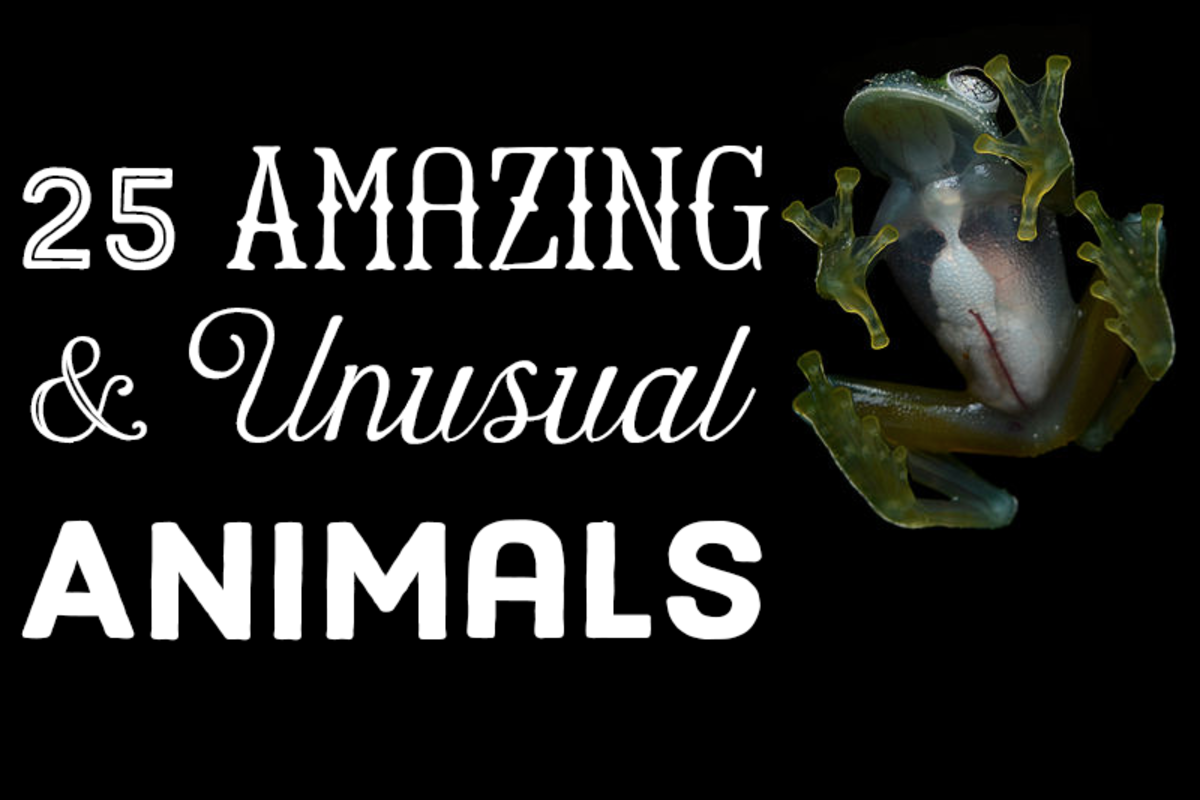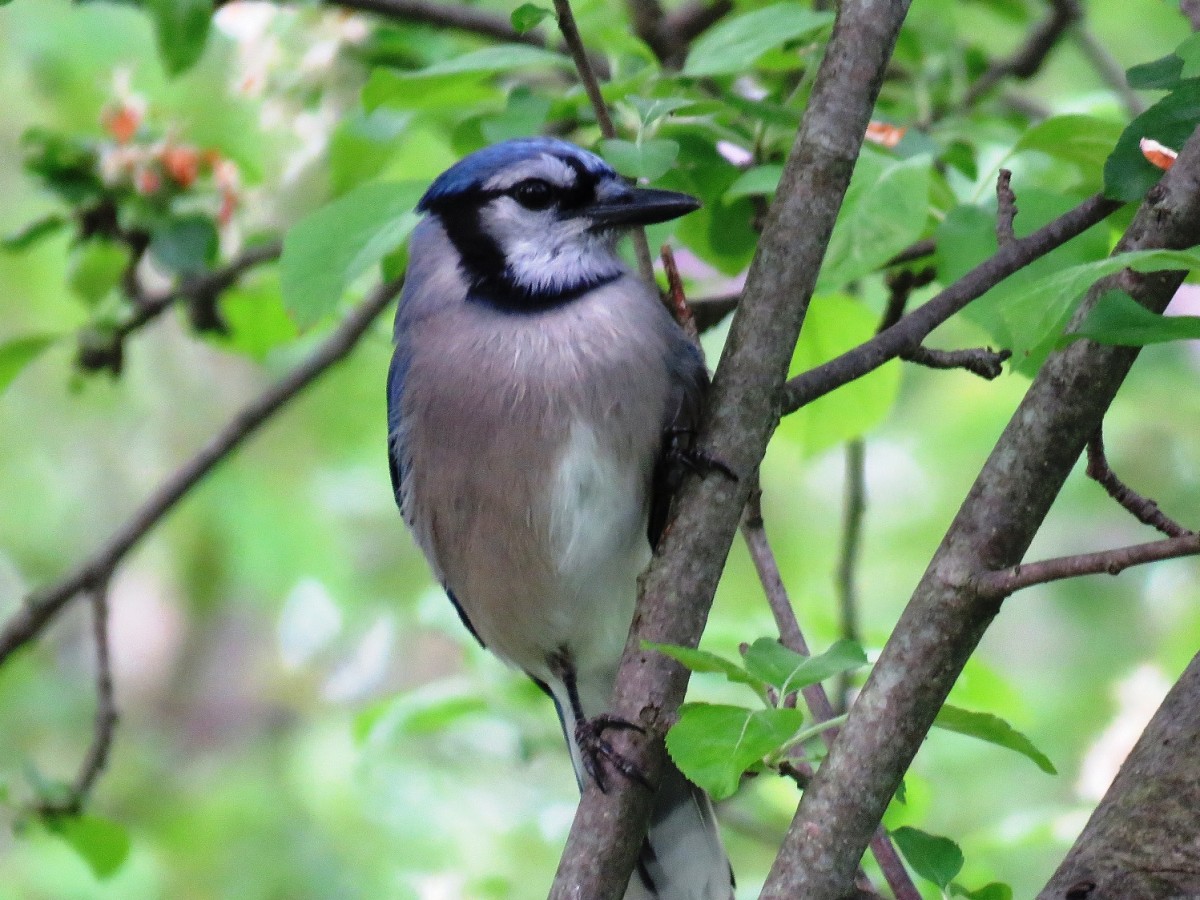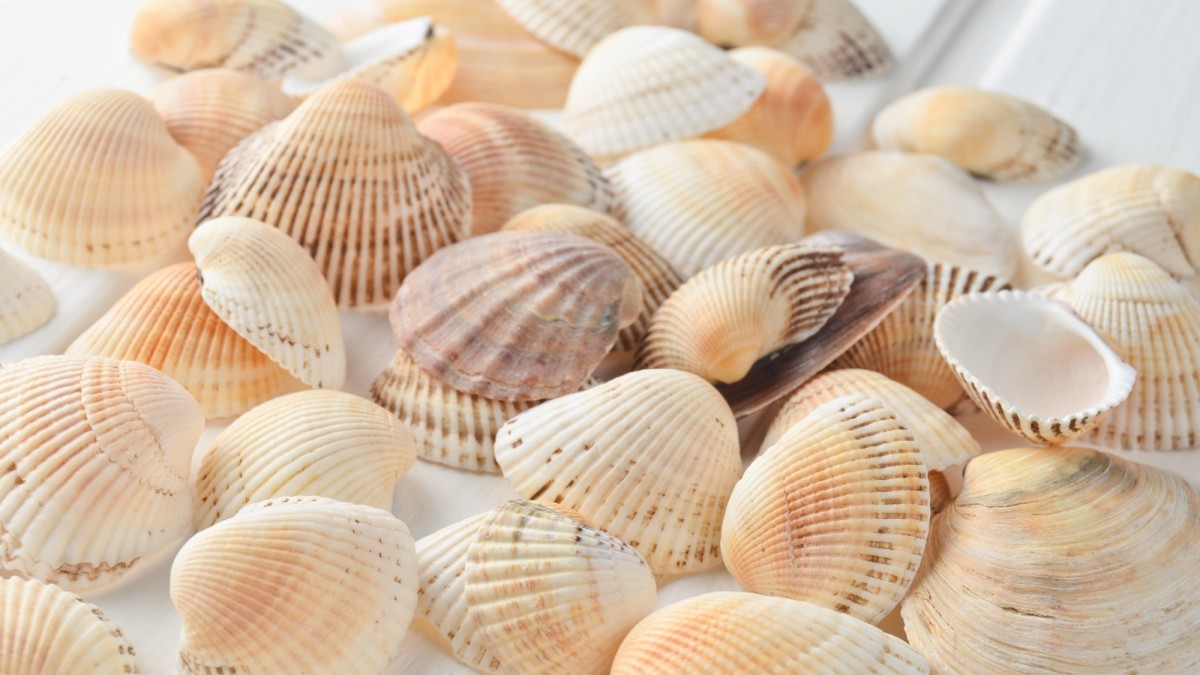Insects- a Classification, Physical Appearance, and their Weapons
Insects are in the class Insecta of Kingdom Animals. Class Insecta encompasses over 800,000 species, nearly three quarters of all the animal species. Not all of them are as familiar as the grasshoppers, flies, bees, and butterflies. Many of God's most unusal creatures belong to this diverse, yet surpisingly homogenous group. Certain characteristics of insects help explain why they can be so abundant. One of the most important is that most insects can fly. This ability enables them to escape from danger, find a mate, look for food, and search for a suitable environment. Insects also have tremendous reproductive capabilities; certain species can produce thousands of eggs in a single day. Finally, insects vary so much that they rarely compete with one another for food of living space. Some insects eat leaves of fruit; others suck plant juices, drink human blood or prey upon animals.
The sheer numbers of insects make them a major influence in nature and an important part of man's life. Some insects produce honey, silk, and wax and perform beneficial services. Others destroy crops, transmit deadly diseases, and are just plain pests.
The members of the Insecta share several characteristics that distinguish them from the other arthropods. Insects have three pairs of walking legs, one pair of sensory antennas, and they usually have wings. Also their bodies are divided into three segments: head, thorax, and abdomen.
Legs of insects
Insects have three pairs of jointed legs located along the thorax. The structure of the limb varies with the type of movement the insect performs. The legs of the fly have tiny claws and sticky pads, enabling it to climb smooth surfaces. The tremendous jumps of the grasshopper are made possible by heavily muscled hind legs. The closely set bristles of the long legs of the water strider allow the animal to skitter across the surface film of water.
The legs of some insects were designed for functions other than locomotion. For example, the front limbs of the praying mantis, which appear folded in prayer, are actually powerful "claws" for seizing prey. The fuzzy legs of the bee have special combs and hairs that are used to groom its body and carry large quantities of pollen. Some insects use their legs to make sounds to attract a mate.
wings of insects
Most insects have two pairs of wings, although some species have one pair, and wingless species do exist. Insects are the only invertebrates that can fly. Their flying styles and speeds vary. The butterfly floats lightly on the air, beating its wings five to six times per second. The bee, on the other hand, whips the air with its small wings at up to two hundred beats per second. Flight speeds vary from the fly, which averages eight kilometers (five miles) per hour, to the dragonfly, which cruises at forty kilometers (twenty-five miles) per hour.
Insect wings, like their legs, differ in structure and function. Membranous wings are thin, transparent, and crisscrossed with numerous supporting veins. These are the flying wings of most insects. The flight wings of the butterflies and moths, however, are covered with delicate scales. These colored scales rug off easily. Two other wing types serve protective purposes. The grasshopper has its membranous wings covered by a front pair of leather-like wings. When the insect is not in flight, these wings protect the flying wings. The front wings of beetles, like the ladybug, are horny wings, thick shields that cover not only the membranous wings but also most of the dorsal surface of the insect.
Reproduction of insects
In insects the sexes are separate. The female stores the sperm in a seminal receptacle. As the female lays the eggs, they are fertilized. The ovipositor, a pointed extension of the abdomen, is the organ used to deposit the eggs. The exact structure of the ovipositor varies. The grasshopper uses its short, stout ovipositor to dig a burrow for its eggs. The ichneumon wasp, with a slender ovipositor reaching fifteen centimeters (six inches) in lenght, inserts this probe deep into the bark of a tree to place its eggs in woodburrowing beetle larvas. The wasp larvas will feed upon the beetle larvas. Some female insects cover their eggs with a protective secretion. The praying mantis lays its eggs in a gummy mass that hardens into a protective case. Other insects " shellac" their eggs to leaves or bark to hold them in place and waterproof them.
Development of insects
During its development from egg to adult, an insect may assume a variety of forms that differ vastly in appearance, structure, diet, and habitat. This series of developmental changes is metamorphosis. For many insects these changes permit their various stages to accomplish different functions. For example, some insects only eat during their immature forms and decome adults only to reproduce and die in a few hours. Although some insects have no metamorphosis, for most insects the process of metamorphosis takes one of two major routes.
Incomplete metamorphosis, the line of development followed by such land insects as grasshoppers, cicadas, and true bugs, is a process involving three basic stages: egg, nymph, and adult. The nymph, which hatches from the egg, is like a miniature, oddly proportioned adult. The nymph lacks wings and external reproductive structures. As the nymph grows and molts, it becomes more and more like the adult. When it finally develops wings and mature reproductive structures, the insect is an adult. In incomplete metamorphosis, if the immature stage of the insect lives in water, it is called naiad (NAY ud). Dragonflies and mayflies have naiads. The naiad differs significantly from the adult since it is wingless and has gills. After a period of growth and several moltings, the naiad climbs out of the water and molts once again to become a flying, reproductive adult.
Complete metamorphosis, the spectacular development process used by almost 90% of the insects, involves four stages: egg, larva, pupa, and adult. The egg hatches into the larva, a segmented wormlike stage. The larvas of various insects have common names: maggots for flies, grubs for beetles, wigglers for mosquitos, and caterpillars for moths and butterflies. The most important activity of any larva is to feed. After a period of eating and molting, the larva enters a resting period, the pupal stage. During this stage stage the pupa forms a case about itself or weaves a silken coccon. Though outwardly quiet, the pupal stage is a period of considerable activity. Within the protective case the body structures and organs of the larva are dismantled and completely reshaped. Eventually the pupa case opens, releasing a fully grown, fully developed adult insect.
The process of complete metamorphosis is controlled by hormones, chemicals secreted by glands into the blood. These chemicals control the metabolism of the animal, causing the larva to molt, grow, and form a pupa, and the adult to emerge from the pupa case.
Survival of insects
Not only are there more species of insects than any other type of animal, but usually there are more individials in an insect species than in other species in the kingdom Animalia. Insects survive so abundantly because they are equipped with a large number of varied defenses. These defenses may serve to keep the individual insect or the entire species alive. Some of the common insect defenses are discussed here.
Physical appearance as a mean of defense
The first line of insect defense is the insect itself. The body color and the shape are often simple but effective camouflage, making some insects almost invisible to would-be predators. When they rest openwinged upon the bark of the tree, some mottled-colored moths are virtually invisible. Some insects blend into the scenery by resembling objects like leaves, twigs, flower petals, and even thorns. The slender body of the walking stick, for example, resembles a twig.
Many insects have brilliant colors that make them conspicuous. In many cases this is warning coloration, informing potential predators that the insect tastes bad or can defend itself. The monarch butterfly, for example, tastes bad to birds and cause them to vomit. A bird which has had an unpleasant experience with the monach will remember the distinctive appearance of the insect and not try to eat another one. Predators also learn that the vivid color patterns of bees and hornets mark insects that can deliver a painful sting.
Other insects "outwit" their predators by resembling insects that predators avoid. The hornet moth with its furry yellow and black body and thin, transparent wings looks strikinglingly like hornet. An organism that has been stung by a real hornet will avoid this harmless imposter. The viceroy butterfly closely resembles the foul- tasting monarch. As a result most predators avoid the edible viceroy.
Weapons of insects
Some insects depend upon special weapons to repel attackers. The most weapons are the burst of irritating gas. Rapid repeat firing of this weapon discourage most predators. The most familiar weapons are the poisonous stingers of bees and wasps and the piercing mouthparths of mosquitoes. Some insects, have mouthparts capable of inflicting painful bites.
The insect world has its share of "skunk," insects that secrete foul odors to repel their enemies. The bombardier beetle has a chemical laboratory in its body which can produce an explosive chemical mixture. When threatened by a pradator, the beetle directs its abdominal duct at the enemy, mixes the chemicals of its weapon, and blasts the attacker with explosive burst of irritating gas. Rapid repeat firing of this weapon discourages most predators.

